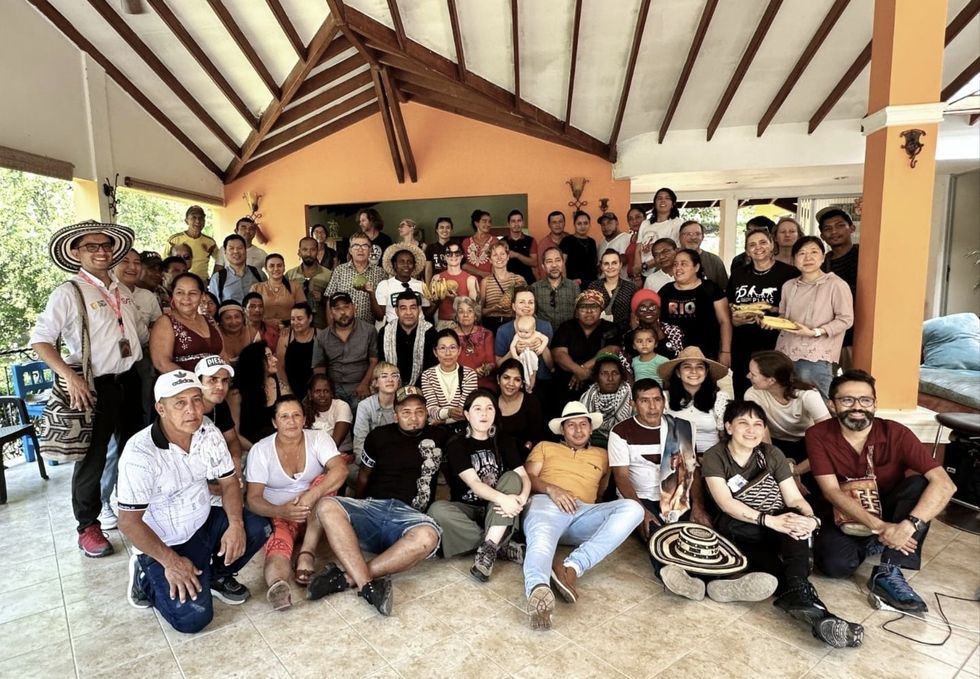The link between land health, food security, and climate resilience is clear. But the role of women—who form the backbone of food production globally—is often overlooked. Women have extensive ecological knowledge and are key stewards of land, particularly those in rural and Indigenous communities. Women produce up to 80% of the world’s food, consumed by families and communities worldwide, and account for between 30-40% of the agricultural workforce. Yet, fewer than 20% of landowners are women—and, in half of the world’s countries, they have little to no rights or decision-making power over the land they work. This systemic land insecurity undermines their ability to implement long-term soil and land restoration practices crucial for climate adaptation.
The Three Systemic Barriers to Women’s Leadership in Land Restoration
To truly #AccelerateAction, as this year’s International Women’s Day theme calls for, we must address the root of the problem: land access. Without secure land tenure, women farmers face three systemic challenges.
Limited decision-making power results in less resilient agriculture: Studies from the International Food Policy Research Institute (IFPRI) indicate that women farmers with land rights are more likely to invest in soil conservation and water retention techniques, which are crucial for adapting to climate change. Without control over their land, women are often forced to comply with farming methods that may coincidentally be more planet-friendly (due to women lacking access to resources like chemical inputs) but are often less efficient and reduce resilience to yield variation. Women’s land insecurity translates into a lack of autonomy in adopting and scaling climate-smart farming methods that can both render their community more climate resilient and reduce hunger.
Restricted access to funding and training: Despite their deep knowledge of sustainable farming, women are often systematically denied access to credit, training, and agricultural extension services. A report by the World Bank found that if women had the same access to resources as men, agricultural yields could increase by up to 30%, reducing global hunger. Yet, because they often lack legal land ownership, they are sometimes ineligible for loans and grants that could help them transition to nature-positive forms of agriculture. Bridging this gap would not only benefit women but also strengthen global food security and climate resilience.
The disproportionate impact of climate change on women: Climate change exacerbates existing inequalities, and land degradation disproportionately affects women. Roughly 80% of the people displaced by climate disasters are women. In communities where women lack land rights, they have fewer options for adaptation and recovery. Secure land tenure empowers women to implement long-term solutions that enhance climate resilience, from agroecological practices to community-led reforestation projects.
The Path Forward: Solutions for Gender-Inclusive Land Restoration
Landscape restoration is only possible when everyone in the community—including women—has the rights, resources, and recognition they deserve. Ensuring land tenure for women is not just about equity—it’s about survival. Women are already leading land restoration efforts across the globe. In Kenya, the Green Belt Movement, founded by Wangari Maathai, has empowered thousands of women to restore degraded forests, leading to the planting of over 50 million trees. In India, women-led self-help groups have restored thousands of hectares of farmland through water conservation and agroecology. These initiatives prove that when women have control over land, they invest in solutions that benefit both people and the planet. And it’s not rocket science—there are concrete policy solutions that can ensure women can lead the charge in restoring land and combating climate change.
In order to increase and enforce land rights for women, countries must reform laws that restrict women’s access to land. In sub-Saharan Africa, for example, customary laws often prevent women from inheriting land, even when statutory laws permit it. Enforcing legal protections is critical. In addition, more funding opportunities must be available to women in agriculture: Only 6% of agricultural aid funding worldwide treats gender as a fundamental issue. Governments and financial institutions must close the agriculture funding gap for women through targeted grants, subsidies, and loan programs. In tandem, women’s traditional knowledge of farming and conservation must be supported with expanded access to climate-smart agricultural training. Finally, climate-smart agricultural training must consider gender dynamics, as poorly designed programmes can unintentionally empower men while sidelining women. Research shows that when gender is overlooked, existing inequalities can be reinforced. Organizations should recognize that technologies and policies often carry biases that can entrench power imbalances, restrict food security, and further marginalize women.
This year’s International Women’s Day theme, #AccelerateAction, calls on the world to address the structural barriers slowing progress. If we are serious about climate action, we must start at the root of the problem: land access. Without land security, women farmers remain locked out of decision-making, deprived of resources, and forced to fight climate change and nature loss with one hand tied behind their backs.
A just, climate-resilient future is not possible without women at the forefront of land restoration. By securing their rights to land, we not only restore degraded ecosystems but also unlock the full potential of those who have been caretakers of the Earth for generations. If we want to accelerate action, we must start by giving women the tools they need: land, security, and the power to lead.




